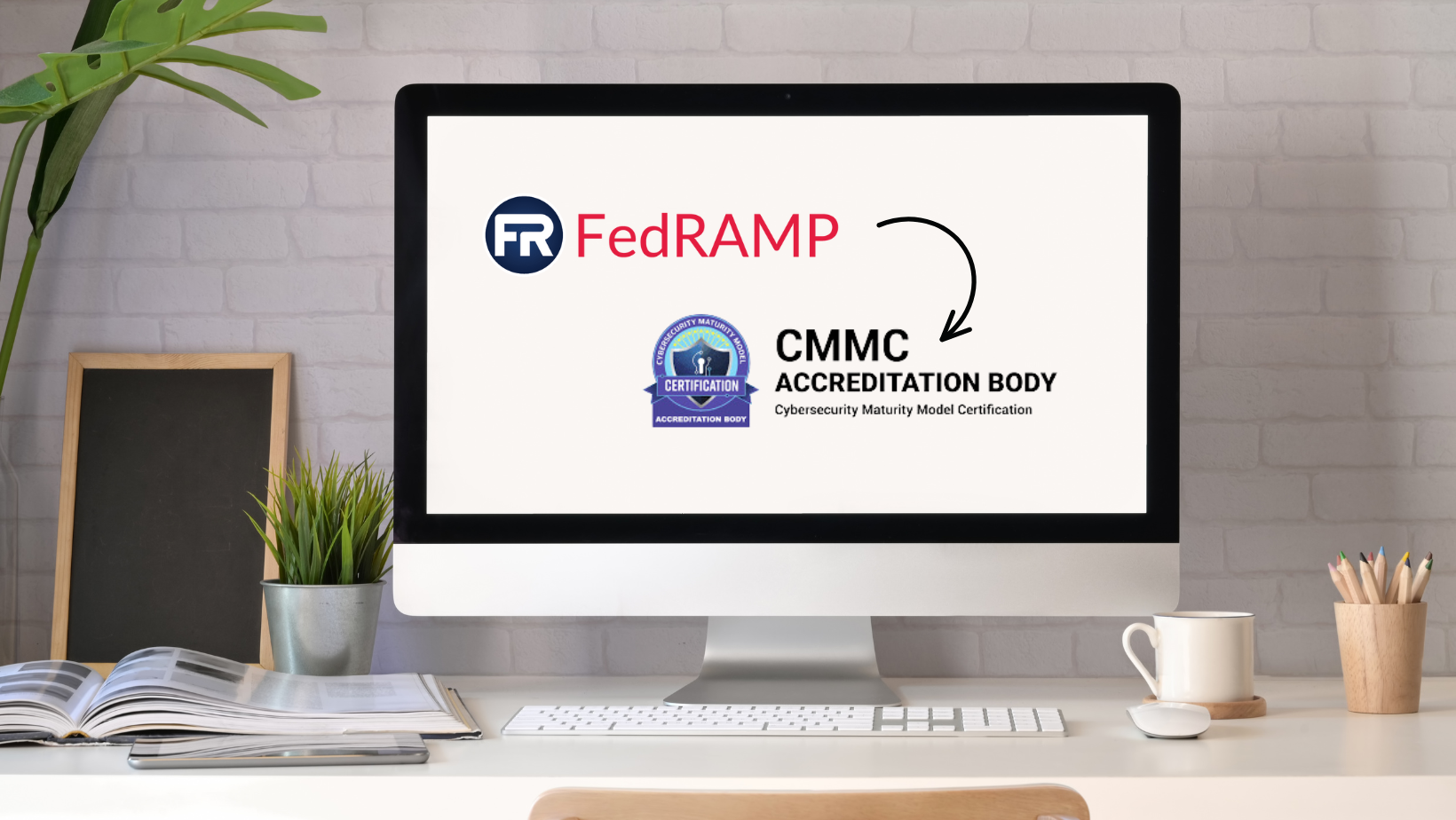Leadership goes beyond titles — in cybersecurity, it’s about foresight and a proactive strategy. It involves setting a clear vision for cybersecurity initiatives, ensuring that your organization’s culture is aligned with these goals, and allocating the necessary resources. The requirements of the Cybersecurity Maturity Model Certification (CMMC) and the Federal Risk and Authorization Management Program (FedRAMP) provide a structure for this. As a leader, understanding and successfully steering your organization to comply with these frameworks is not just about adhering to regulations; it’s about embedding a culture of security and compliance.

A leader’s role in CMMC and FedRAMP:
- Setting a clear vision for cybersecurity initiatives
- Aligning the organization’s culture with security goals
- Allocating necessary resources for compliance
CMMC vs. FedRAMP
CMMC stands as a benchmark for companies planning to work with the Department of Defense, emphasizing various levels of cybersecurity practices and processes. On the other hand, FedRAMP is designed for cloud services and products used within the federal government, focusing on standardizing security assessment and authorization. While CMMC is more corporate technology-specific and FedRAMP applies to cloud technology, both share a common thread: the emphasis on protecting sensitive data and systems.
CMMC
- Designed for organizations working with the Department of Defense and some non-defense agencies
- Focuses on varying levels of cybersecurity practices
FedRAMP
- Essential for cloud services in the federal government
- Aims at standardizing security assessment
Strategies Toward CMMC Compliance
Navigating the CMMC landscape requires a strategic mix of internal attentiveness and external expertise. For leaders, this means creating an organizational blueprint that aligns with the business goals and technology strategy. It involves continuous improvement in cybersecurity practices, regular staff training, and fostering a culture of security awareness. Preparing for CMMC also means engaging in self-assessment, possibly simulating audits, to identify and address any gaps in compliance.
- Creating an organizational blueprint
- Fostering a security culture
- Preparation and self-assessment
Navigating FedRAMP Requirements
Leaders must ensure their teams are confident in handling federal data and understand the intricacies of their Cloud Security Officer (CSO) packaged for government use. This often involves working closely with third-party assessment organizations (3PAOs) and leveraging authorized tools to streamline the compliance process. The key here is not just to meet the standards but to embed them into the very fabric of your organization’s cloud operations.
- Understanding cloud security
- Collaborating with experts
Integrating CMMC and FedRAMP Into Organizational Culture
True leadership in cybersecurity means embedding these standards into the daily workflow and mindset of every team member. It’s about moving past compliance as a checkbox exercise to it being a fundamental business practice. This cultural shift requires continuous communication, education, and reinforcement of the importance of these frameworks.
- Security as a fundamental business practice
- Cultural shift
Conclusion
Navigating the complexities of CMMC and FedRAMP involves a continuous evolution of practices, policies, and mindsets to keep pace with the ever-changing cybersecurity landscape. For a leader, success in this domain is measured not just by achieving compliance but by instilling a lasting culture of security mindfulness that touches every level of your organization.
Max leads Ignyte Assurance Platform as the Managing Director focused on helping organizations cut through cyber security challenges. Max is a former U.S Air Force data security & compliance officer. As a Data Security and Compliance Leader, Max has implemented security strategies working directly with CxOs of global firms.
His latest work focuses on meeting high assurance standards involving federal cloud computing. He has also successfully guided Ignyte through the 3PAO, management of Air Force led Cooperative R&D Agreement (CRADA) and now helps other organizations navigate their FedRAMP challenges.
Max graduated with a bachelor’s from Wright State University, Computer Science from American Military University and Criminal Justice Associates from Community College of the Air Force. Education is supplemented by several industry credentials: PMP, Certified Scrum Master, CISSP, and graduated from AMU with an associate’s degree in general studies — Computer Science in 2008 and bachelor’s in Information Systems Security in 2009.





Leave a Reply
You must be logged in to post a comment.